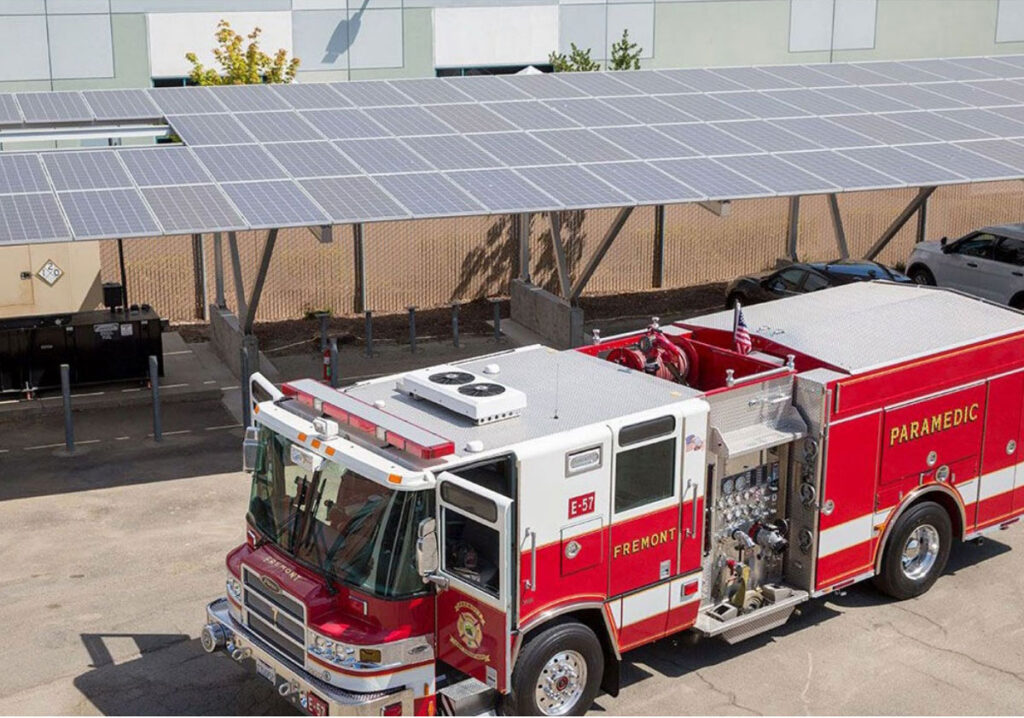Advancing Resilient Clean Energy in California

Experts are predicting an especially dangerous California fire season this year, making it likely that many Californians will once again face extended power shutoffs as utilities try to prevent the ignition of fires from their equipment. In a recent decision, the California Public Utilities Commission (CPUC) took some key steps to make it easier for communities and electric customers to keep the lights on during times when electric utilities switch off power lines. Last November, Vote Solar and others had urged the Commission to fast track policies that could be implemented before the beginning of the 2020 fire season. A decision adopting several important measures was approved by the CPUC at its June 11 meeting.
While its approval took longer than Vote Solar expected, this first decision in the Commission’s ongoing Microgrid proceeding will enable more customers to use local solar plus storage to create small islands of resilience in communities at risk for wildfires. The decision will also allow PG&E to take some stop-gap measures this summer to create larger temporary microgrids. While PG&E will be allowed to use temporary mobile generators that burn fossil fuel during the 2020 fire season, the CPUC urged PG&E to work with local communities to come up with more durable solutions.
In one important step forward, the CPUC’s decision highlighted the importance of utility collaboration with local and tribal governments in coming up with durable resiliency solutions that truly work for communities. The utilities have been ordered to develop a resiliency project engagement guide to assist in the successful development of community-led microgrid projects. Utilities will also be expected to add staff dedicated to working with communities on resiliency project development. Local and tribal governments will also be given access to critical utility data about the grid through dedicated internet portals. Access to grid and customer data is critically important for the identification of viable microgrid opportunities that can provide long-term community resilience in the face of multiple threats, and that can keep power flowing to low-income and other vulnerable Calfornians.
Vote Solar and our allies have pushed hard for the development of clean, community-led microgrids rather than microgrids developed, owned and operated by the electric utilities, and we recently succeeded in convincing PG&E to withdraw a proposal to build as many as 20 large fossil fired generators at distribution substations in Northern California. With that problematic idea off the table, the CPUC approved PG&E’s proposal for a one-year program to lease portable fossil fuel generators to address grid shutoffs. The temporary generation program was approved only for the 2020 wildfire season, and PG&E will be required to report on the number of fossil fuel generators deployed and their use including a summary of greenhouse gas and criteria air pollutant emissions. The utility will also have to make recommendations for improvements in providing reliable customer service based on its experience during the 2020 wildfire season.
Historically, one of the major barriers to developing resilient clean energy projects has been the interconnection process managed by utilities. Clean power systems that can operate when disconnected from the larger grid have previously required lengthy study processes. To reduce the amount of time it takes to connect solar plus storage systems, the agency’s recent decision required the utilities to develop standard electric designs (single-lines) that would expedite interconnection. Likewise, the utilities will be required to also develop simple and quick inspection processes including the use of videos and photos.
The decision also modified the state’s net energy metering (NEM) tariff that rewards on-site production of renewable energy to ensure backup power can be fully charged during a planned power shutoff. Previously, batteries in NEM applications could only be charged by the paired solar power system. In the future, batteries can use grid power in advance of an announced power shutoff to assure that the battery is fully charged when the shutoff begins. In addition, the size limits on batteries eligible under the NEM tariff have been removed which will allow for longer islanded operation.
The Microgrid proceeding now enters its second phase, during which the CPUC will consider policies that enable the commercialization of more complicated multi-customer microgrids. The Vote Solar team will continue to be deeply engaged in this proceeding with the goal of encouraging more resilient clean energy solutions across the state.

